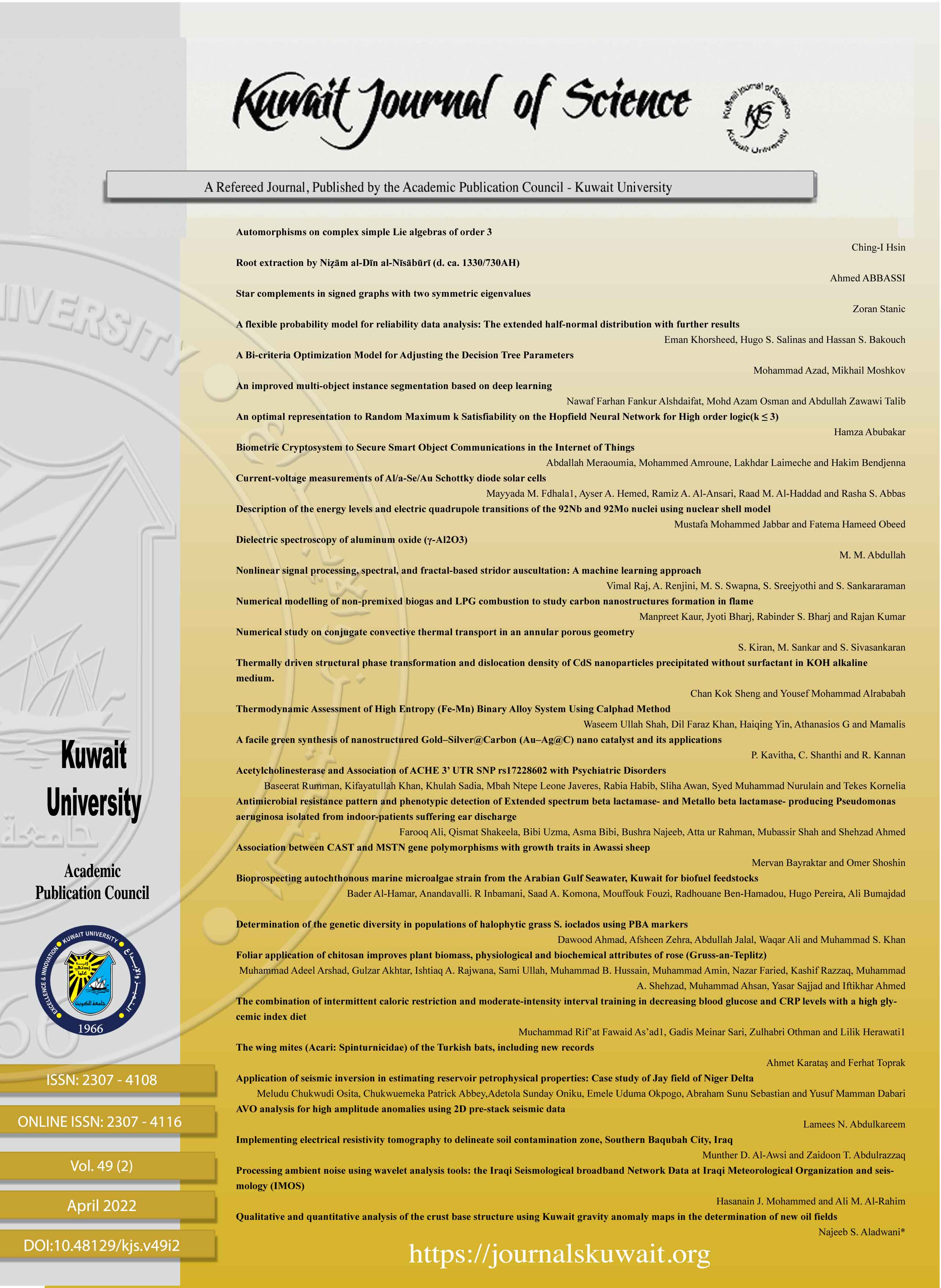Foliar application of chitosan improves plant biomass, physiological and biochemical attributes of rose (Gruss-an-Teplitz)
DOI: 10.48129/kjs.11655
DOI:
https://doi.org/10.48129/kjs.11655Abstract
Rose is an important floricultural crop that has been exploited for many uses. Its important uses in different industries include, pharmaceutical, perfumery, and food industries that manifest higher flower yield. Therefore, response of Gruss-an-Taplitz to foliar application of chitosan (0, 2.5, 5, 7.5, 10 ppm), was evaluated in an experimental field. Chitosan treatment had significant effects on studied parameters, including growth, pigments, enzymes, and gaseous exchange. This experiment was laid out under RCBD using three replications per treatment. Chitosan (7.5 ppm) significantly improved growth, in terms of higher leaf area (20.37%), height of plant (20.19%), number of flowers (55.51%), flower weight (34.64%) and flower diameter (33.78%) as well as enhancing relative water contents (27.38%) with respect to control. Chlorophyll a (54.60%), Chlorophyll b (12.13%), Carotenoid (8.36%) and anthocyanins (17.09%) were also increased at 7.5 ppm chitosan, which showed higher photosynthetic pigments as compared to control. Consequently, chitosan (7.5 ppm) treated plants showed higher enzymatic activity; CAT (9.94%), SOD (83.87%), GPX (64.54%), Total antioxidant (35.48%), phenolics (7.41%) and gaseous exchange; Pn (55.65%), E (31.76%), and gs (18.38%) Ci (34.17%) that improved the growth and productivity of Gruss-an-Taplitz. Foliar application of 7.5 ppm chitosan improved biomass, water preservation, pigments, enzymatic activity and leaf gaseous exchange, resulted in higher production and quality of Gruss-an-Taplitz plants.



